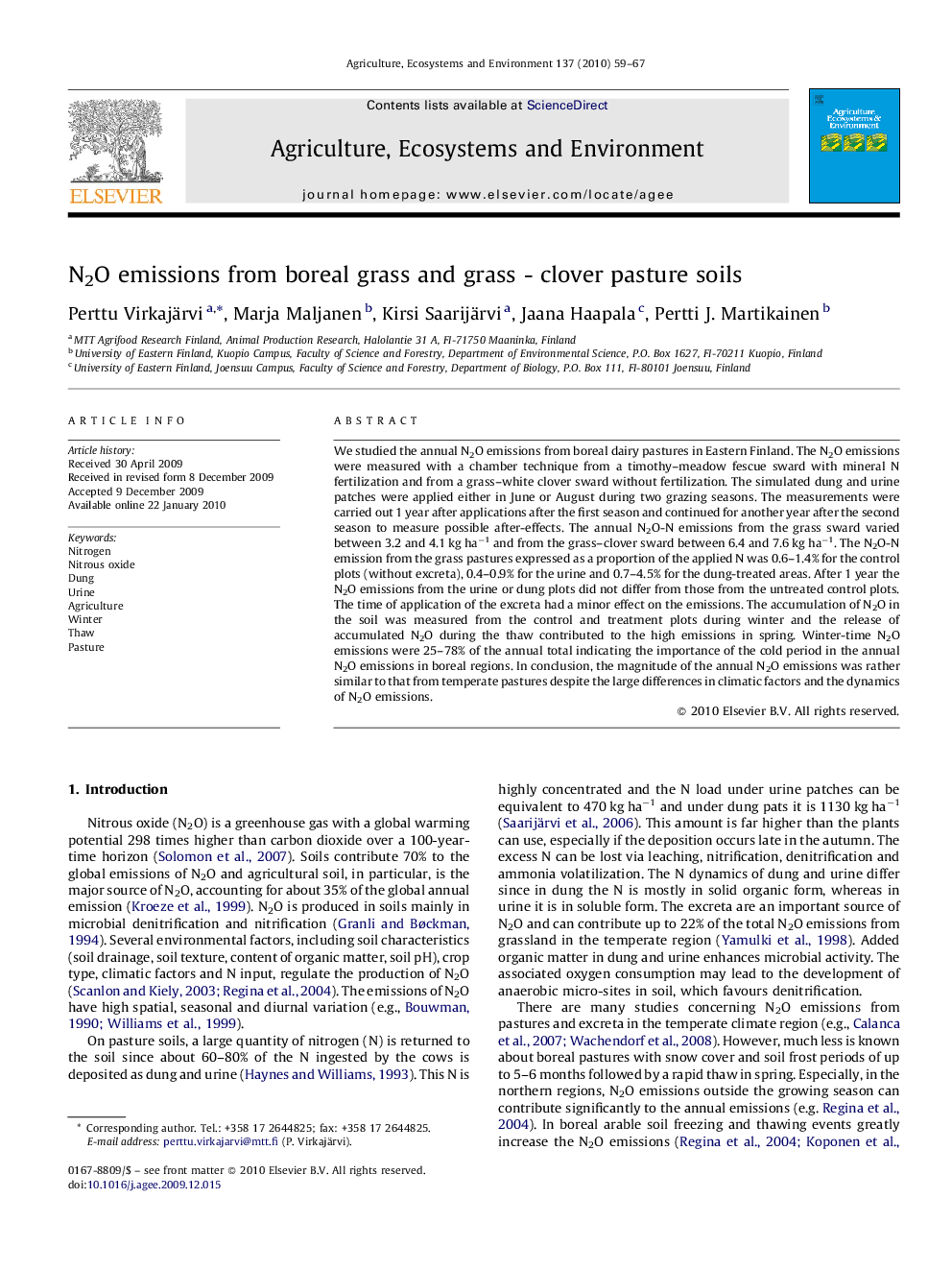| Article ID | Journal | Published Year | Pages | File Type |
|---|---|---|---|---|
| 2414995 | Agriculture, Ecosystems & Environment | 2010 | 9 Pages |
We studied the annual N2O emissions from boreal dairy pastures in Eastern Finland. The N2O emissions were measured with a chamber technique from a timothy–meadow fescue sward with mineral N fertilization and from a grass–white clover sward without fertilization. The simulated dung and urine patches were applied either in June or August during two grazing seasons. The measurements were carried out 1 year after applications after the first season and continued for another year after the second season to measure possible after-effects. The annual N2O-N emissions from the grass sward varied between 3.2 and 4.1 kg ha−1 and from the grass–clover sward between 6.4 and 7.6 kg ha−1. The N2O-N emission from the grass pastures expressed as a proportion of the applied N was 0.6–1.4% for the control plots (without excreta), 0.4–0.9% for the urine and 0.7–4.5% for the dung-treated areas. After 1 year the N2O emissions from the urine or dung plots did not differ from those from the untreated control plots. The time of application of the excreta had a minor effect on the emissions. The accumulation of N2O in the soil was measured from the control and treatment plots during winter and the release of accumulated N2O during the thaw contributed to the high emissions in spring. Winter-time N2O emissions were 25–78% of the annual total indicating the importance of the cold period in the annual N2O emissions in boreal regions. In conclusion, the magnitude of the annual N2O emissions was rather similar to that from temperate pastures despite the large differences in climatic factors and the dynamics of N2O emissions.
